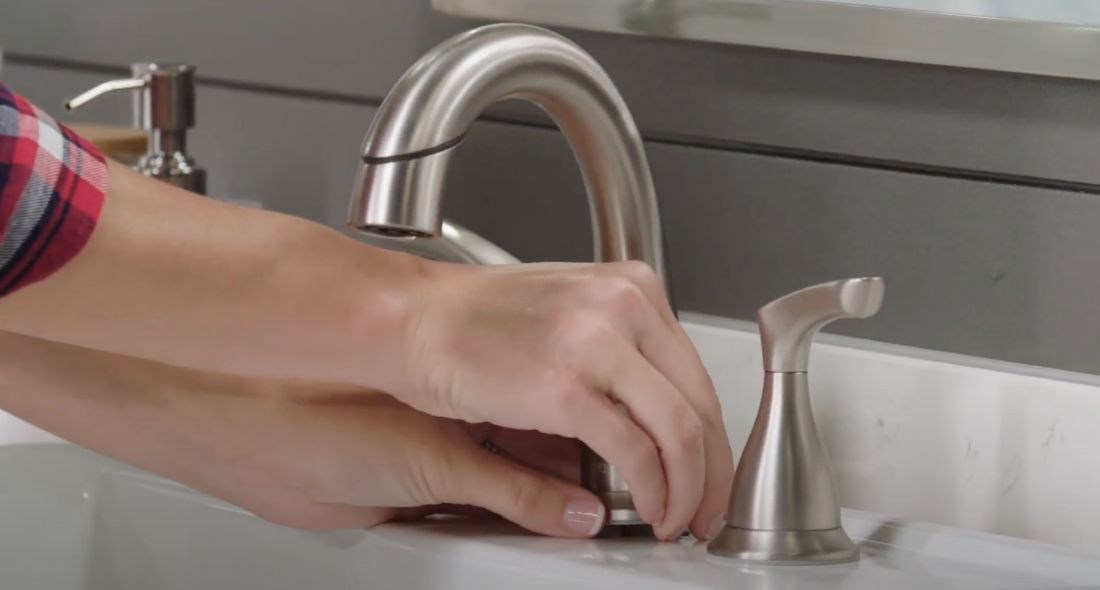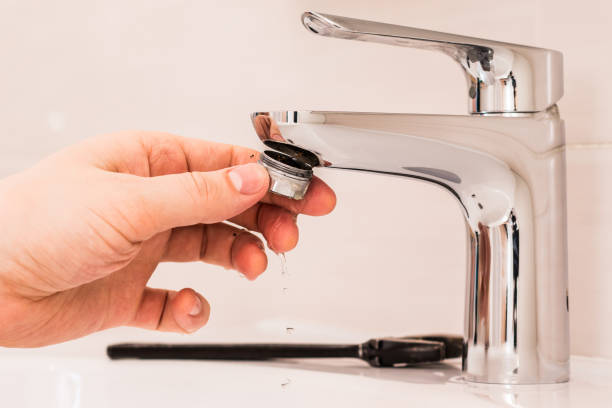An Importance of Addressing a Broken Faucet
An Importance of Addressing a Broken Faucet
Blog Article
The article following next about Why It's Important to Fix Leaky Faucets is immensely motivating. You should check this stuff out.

Leaking taps could seem like a minor hassle, however their influence surpasses simply the annoyance of the sound. From wasting water to incurring unnecessary monetary expenses and wellness threats, ignoring a leaking faucet can bring about various consequences. In this article, we'll look into why it's critical to address this common home issue immediately and successfully.
Waste of Water
Ecological Impact
Leaking faucets add considerably to water waste. According to the Environmental Protection Agency (EPA), a solitary faucet leaking at one drip per secondly can waste more than 3,000 gallons of water each year. This not only pressures water sources but also influences environments and wild animals depending on them.
Financial Prices
Boosted Water Expenses
Beyond the ecological effect, leaking faucets can inflate water costs considerably. The gathered waste in time translates right into greater utility expenses, which might have been prevented with timely fixings.
Prospective Building Damages
Furthermore, long term trickling can result in damage to components and surface areas surrounding the tap. Water build-up can cause discoloration, deterioration, and even architectural problems if left unattended, causing additional repair prices.
Health Concerns
Mold And Mildew and Mildew Development
The constant visibility of moisture from a trickling faucet produces an ideal setting for mold and mold growth. These fungi not just compromise interior air quality however also present health dangers, particularly for individuals with respiratory system conditions or allergies.
Waterborne Conditions
Stagnant water in leaking taps can become a breeding ground for germs and various other pathogens, boosting the threat of waterborne diseases. Pollutants such as Legionella microorganisms thrive in stagnant water, possibly resulting in severe health problems when consumed or inhaled.
DIY vs. Expert Repair service
Pros and Cons of Do It Yourself Fixing
While some might attempt to repair a leaking tap themselves, DIY repair work include their very own collection of challenges. Without proper understanding and tools, do it yourself efforts can worsen the concern or bring about incomplete repair services, lengthening the trouble.
Advantages of Working With a Professional Plumber
Hiring a professional plumber guarantees that the underlying root cause of the leaking tap is addressed effectively. Plumbings possess the competence and devices to identify and repair tap problems effectively, conserving time and lessening the danger of further damage.
Step-by-Step Overview to Dealing With a Dripping Tap
Tools Required
Prior to trying to deal with a leaking tap, collect the required devices, consisting of a flexible wrench, screwdrivers, substitute parts (such as washers or cartridges), and plumber's tape.
Typical Tap Issues and Their Solutions
Identify the kind of faucet and the specific issue creating the drip. Typical issues include worn-out washing machines, rusty shutoff seats, or malfunctioning O-rings. Refer to manufacturer guidelines or on the internet tutorials for step-by-step advice on repair work.
Preventive Measures
Normal Upkeep Tips
To prevent trickling faucets, perform regular maintenance such as cleaning aerators, inspecting for leakages, and changing damaged components immediately. Additionally, take into consideration setting up water-saving devices or updating to a lot more efficient fixtures.
Importance of Prompt Repairs
Attending to dripping faucets as quickly as they're seen stops additional water wastefulness and prospective damages, eventually conserving both water and money in the future.
Impact on Building Value
Assumption of Well-Maintained Home
Keeping a home in good condition, consisting of dealing with upkeep concerns like dripping faucets, boosts its regarded worth and value among prospective buyers or lessees.
Impact on Resale Value
Features with well-kept plumbing fixtures, consisting of taps, command greater resale worths in the realty market. Addressing trickling faucets can add to a positive perception throughout residential property inspections and settlements.
Ecological Duty
Specific Contribution to Conservation
Taking obligation for dealing with leaking taps straightens with more comprehensive initiatives towards water preservation and environmental sustainability. Every individual's actions jointly make a substantial influence on maintaining priceless sources.
Lasting Living Practices
By prioritizing prompt repair work and embracing water-saving practices, people add to sustainable living methods that benefit both present and future generations.
Conclusion
Dealing with a dripping faucet goes beyond mere convenience; it's a vital action towards preserving water, minimizing economic costs, and guarding health and wellness and home. Whether with do it yourself repair services or professional help, acting to take care of trickling faucets is a little yet impactful method to advertise liable stewardship of sources and add to a healthier, a lot more lasting future.
How to Fix a Leaky Faucet: Step-by-Step Repair Guide
A leaky faucet may seem like a simple annoyance, but if it's not fixed promptly, that leak could cost hundreds to potentially thousands. From water damage to mold, mildew, and high water bills, even a tiny leak can be catastrophic if left unattended. Damage like this can even affect the overall value of your home, so it's important to take the right approach for leaky faucet repair. You may need the help of a plumber in some cases, but we've got a few tips you can try on how to fix a leaky faucet before calling the pros.
Four Faucet Types
When you're learning how to fix a leaky faucet, the first step is knowing what kind of faucet you're working with! There are four common types.
Cartridge Faucets
Cartridge faucets come in one- or two-handled varieties. In one-handled cartridge faucets, hot and cold water combines in a single cartridge. In the two-handled versions, hot and cold water are controlled separately and mixed in the faucet.
Ball Faucets
Ball faucets have a single lever you push up and down to adjust the pressure and rotate to change the temperature. A slotted metal ball controls the amount of water allowed into the spout.
Compression Washer Faucets
They're the oldest type of faucet, but they're still used in many homes — especially older ones. Compression faucets have two separate handles that, when turned, raise or lower the washer that seals a water valve. This valve stops water from flowing through the faucet when it is turned off.
Disc Faucets
Disc faucets rarely need to be repaired due to their maintenance-free design. The water flow is controlled by two discs — the upper one raises and lowers against a fixed lower disc, creating a watertight seal. If your disc faucet starts leaking, you may need to replace the seals or clean residue buildup from the inlets.
Fixing a Leaky Faucet
Step 1: Turn Off the Water
Whether you're learning how to fix a leaky bathtub faucet or how to fix a leaky kitchen faucet, always turn off the water supply to your working area when you're fixing a leak. The last thing you want is a flood added to your list of things to fix.
Look for the shutoff valves below your sink or around the tub and turn them clockwise to stop the water flow. If your faucet doesn't have shutoff valves, you may need to turn off the water for the whole house. Check to make sure it's off by turning the faucet on. If nothing comes out, you're ready to start the repair.
Step 2: Take Apart the Faucet
How you disassemble your faucet depends on the type of fixture you have. You can use a flathead screwdriver to remove the caps on top of the handle or handles for cartridge and compression faucets. Inside, you should see handle screws. Unscrew these with a screwdriver to remove the handle.
Disc- and ball-style faucets will typically have an inlet screw near the handle, and removing that will reveal the interior of the faucet.
Detach the Valve Stem
For cartridge- and compression-style faucets, you'll see the inner valve stem or cartridge once you remove the faucet handles. If you have a compression faucet, unscrew the brass valve stem. If you have a cartridge faucet, pull out the cartridge. If your cartridge has been in place for a while, it may require some tools or extra force to remove it due to mineral deposits.
Examine and Replace Parts
Once you've removed the parts, check them out to confirm what needs to be replaced. You may see corroded rubber washers, O-rings, stems, or cartridges. On a ball-style faucet, check the seats and springs for damage.
If you need to repair a leaky disc faucet, check the inlet and seals on the lower disc.
Once you determine what parts must be replaced, visit your local hardware store. Bring the damaged parts with you to ensure you can purchase the correct components to replace them.
Clean Valves and Faucet Cavity
If you've removed a stem or cartridge, you may notice mineral buildup in the faucet's threads. Use white vinegar to clean the valve seat by soaking it for a few minutes, then scrub it away with a soft toothbrush and rinse with warm water. You can also clean the interior of the faucet in the same way.
Reassemble the Faucet
Once your faucet is cleaned and the required parts have been replaced, it's time to reassemble it. Put the pieces back together and slowly turn the water supply back on. Doing this slowly is crucial because too much initial water pressure can damage the new hardware you've just installed.
https://homewarranty.firstam.com/blog/how-to-fix-leaky-faucet

Do you like more info about Should I Repair or Replace a Leaky Faucet?? Make a comment down below. We would be glad to know your insights about this blog entry. We are looking forward to see you back again in the near future. You should set aside a second to distribute this page if you appreciated it. Many thanks for going through it.
Report this page